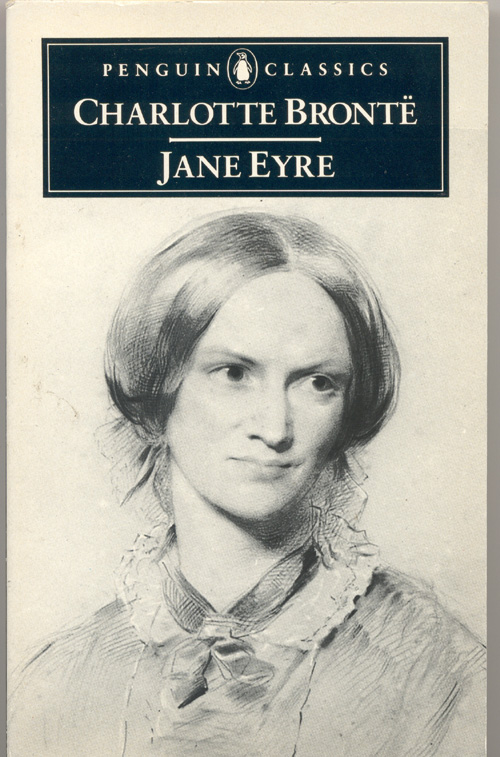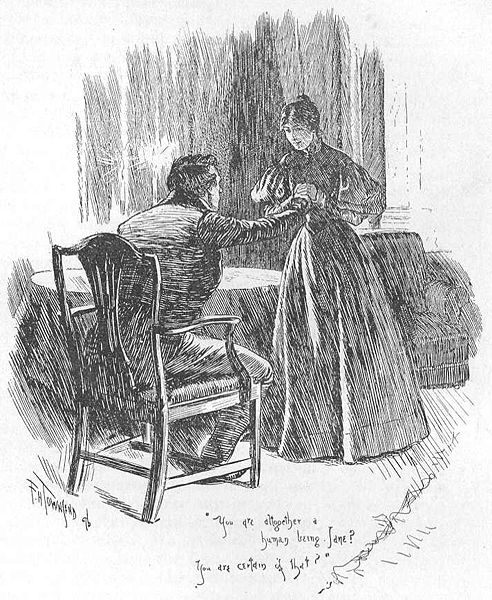by Charlotte Bronte
Smith, Elder, & Co. (October 16, 1847)
532 pages
Fiction/Classic
Summary in a Sentence:
Jane, a plain and penniless orphan in nineteenth-century England, accepts employment as a governess at Thornfield Hall and soon finds herself in love with her melancholy employer, Mr. Edward Rochester, a man with a terrible secret.
My Thoughts:
This isn't my first rodeo with Jane and Mr. Rochester. I first read Jane Eyre in college as part of a Victorian Literature seminar. And yes, that class was AWESOME. Instead of a conventional review, I'd like to touch on a few topics of interest.
Physiognomy and Phrenology:
"I noticed her; I am a judge of physiognomy, and in hers I see all the faults of her class."
Physiognomy was a popular method of character assessment in the 18th and 19th centuries using complicated charts which included measuring the width and height of the forehead and observing the way a person walked to determine certain attributes.
"He lifted up the sable waves of hair which lay horizontally over his brow, and showed a solid enough mass of intellectual organs, but an abrupt deficiency where the suave sign of benevolence should have risen."
Phrenology was a common means of character analysis at the time of Jane Eyre's publication. Developed by F. J. Gall, the practice is based on the assumption that certain traits or characteristics can be located on various points of the skull. Thus the 'organ of veneration' and such that is often mentioned in the novel.
Feminist, What-What?
"Women are supposed to be very calm generally: but women feel just as men feel; they need exercise for their faculties, and a field for their efforts as much as their brothers do; they suffer from too rigid a restraint, too absolute a stagnation, precisely as men would suffer; and it is narrow-minded in their more privileged fellow-creatures to say that they ought to confine themselves to making puddings and knitting stockings, to playing on the piano and embroidering bags. It is thoughtless to condemn them, or laugh at them, if they seek to do more or learn more than custom has pronounced necessary for their sex."This excerpt speaks to the Victorian ideals that stifled so many women in Bronte's time. Throughout the novel, Jane is constantly striving to overcome oppression and to gain equality, first from Mr. Brocklehurst, then Mr. Rochester, and St. John Rivers. Each of these men prefer to keep Jane in a submissive position, but Jane must remove herself from under the control of each, and returns to Rochester only when their relationship can be that of two equal minds.
Now, for an important query: Which movie adaptation should I watch first??
~ Read for Our Mutual Read, Women Unbound, All About the Brontes, and Take Another Chance Challenges ~




11 comments:
This is one of my favourite books of all time. When I was moving to Africa for 3 years, with only 20kg luggage allowance (?50lb) I had to choose my books very carefully, and chose ones that I had re-read so many times that I knew that they would stand up to many more re-readings! The ones that made the cut were Jane Eyre, Little Women, Anne of Green Gables, and Mere Christianity. Once I arrived, I fortunately had access to other books, but those 4 were re-read many times in 3 years!
I have yet to see an adaptation of Jane Eyre that I approved of :-(
I love this book, and I also love the feminist aspect. She didn't return until she was on equal footing money-wise too. It was more political than I thought on first read.
My very favorite adaptation is this one: http://www.imdb.com/title/tt0780362/
I highly recommend it. Both characters do an excellent job.
You should watch the most recent miniseries first - the one from 2006 with Ruth Wilson and Toby Stephens. It's very very very good.
Ooh, I like how you didn't really review this book but just pointed out aspects that point to when it was written and the thought process at that time. I haven't read this for ages. I must!
Hmm, I had never really thought about Jane Eyre in the light of phrenology. I know that the 19th century also had a large emphasis of "the soul appears on the face," or whatever you want to call it. It's interesting, then, that (a) the heroine is plain, and (b) the hero actually goes blind. I'm assuming Bronte was subverting that tendency in 1pth century literature, but it's obvious she wasn't subverting the phrenological leanings. (Unless those quotations are from a specific character. I don't actually remember them, but I was 16 the last time I read it.)
I am really looking forward to reading this in the near future! Thanks for the awesome insights!
I love your take on Jane Eyre! I first came across phrenology in Dr. Olaf Van Schuler's Brain. I thought the author made it up, until I did some research on it. As far movie adaptations - I always thought Timothy Dalton made a delicious Mr. Rochester.
I have not read this yet, but I really liked the additional information about determining characteristics based upon forehead size, etc. Thanks for sharing it.
Much to my shame, I still have not read this book, but I did know a little bit about Physiognomy, and in fact once read a book about it. I found your post to be very interesting and different. I loved it!
Yes, yes, yes--I have read so many reviews were people have complained that Jane is just to pliant and white bread. But I'm always arguing that she definitely stands true to her principals and doesn't accept the woman's role as prescribed by society.
Wicked I did not know this! I have started Jane Eyre and I am in the middle of it.. now i need to complete Anne of Green Gables before I think of restarting it.
I do not want to watch the movie b4 i read the book :)
Post a Comment